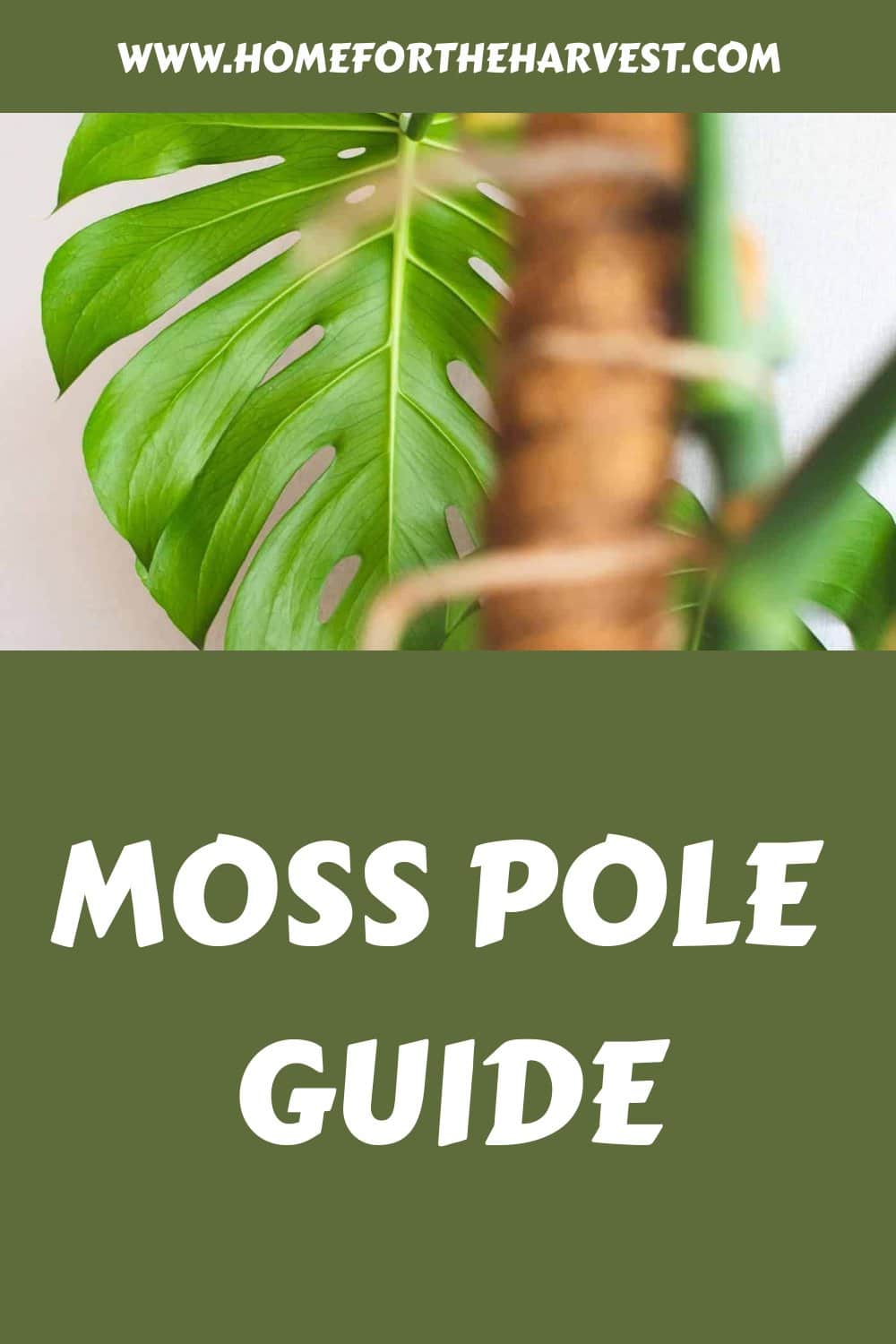A moss pole is a vertical support stake made with live moss used to support vining plants. The moss pole imitates the natural habitat of these plants, giving the stems a solid trellis to climb up. Moss poles are commonly used with potted indoor houseplants like Monstera, Pothos, and Philodendron. Most moss poles are in the range of 12″-48″ tall and are made with wooden stakes wrapped in moss or coco coir.
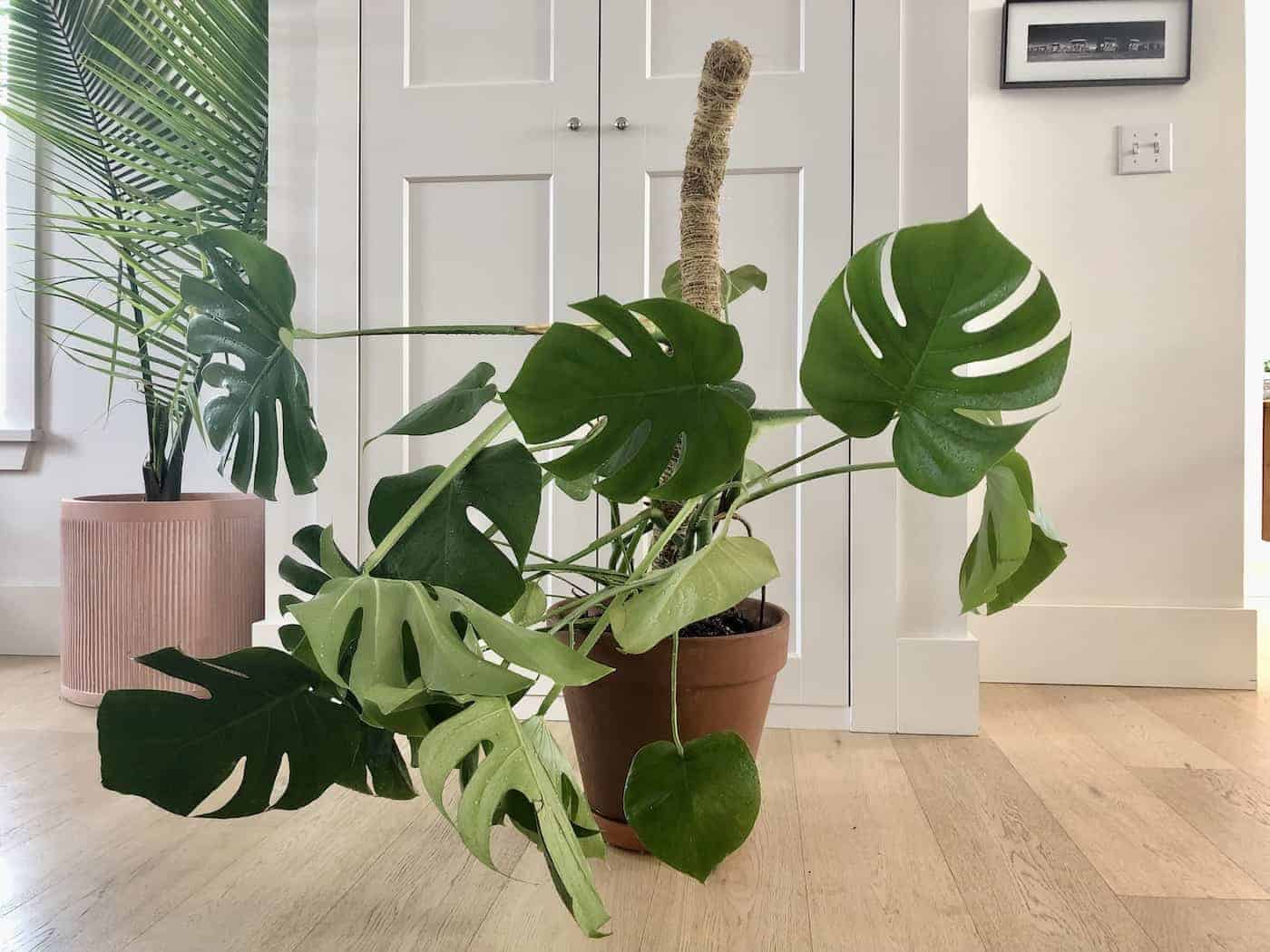
Moss pole basics
A moss pole is a plant stake incorporating loose plant fiber, allowing vining houseplants to attach their stems to the pole easily. Moss poles work best with plants that climb tree trunks or other plants in their natural habitat. Often these are understory tropical vines with aerial roots and glossy dark green leaves. These plants climb up toward the sky to catch more of the sunlight entering the dense canopy.
Moss poles for plants are most easily installed into empty planter pots before a plant’s root ball is placed in the planter. While some moss poles have pointy ends that can poke right into the root ball, moss poles are most sturdy when secured right down to the bottom of the pot.
Adding the moss pole during repotting helps to ensure the pole is placed at the bottom of the pot, making it less likely to wobble. Repotting is the perfect time to add a moss pole to a houseplant. Either re-pot it with a taller moss pole or use a stackable moss pole system to extend the pole without repotting the plant.
Moss poles are generally kept slightly moist to encourage aerial plant roots to secure themselves into the pole. A moss pole for a climbing plant can either be soaked in the sink or misted regularly to keep moisture levels up.
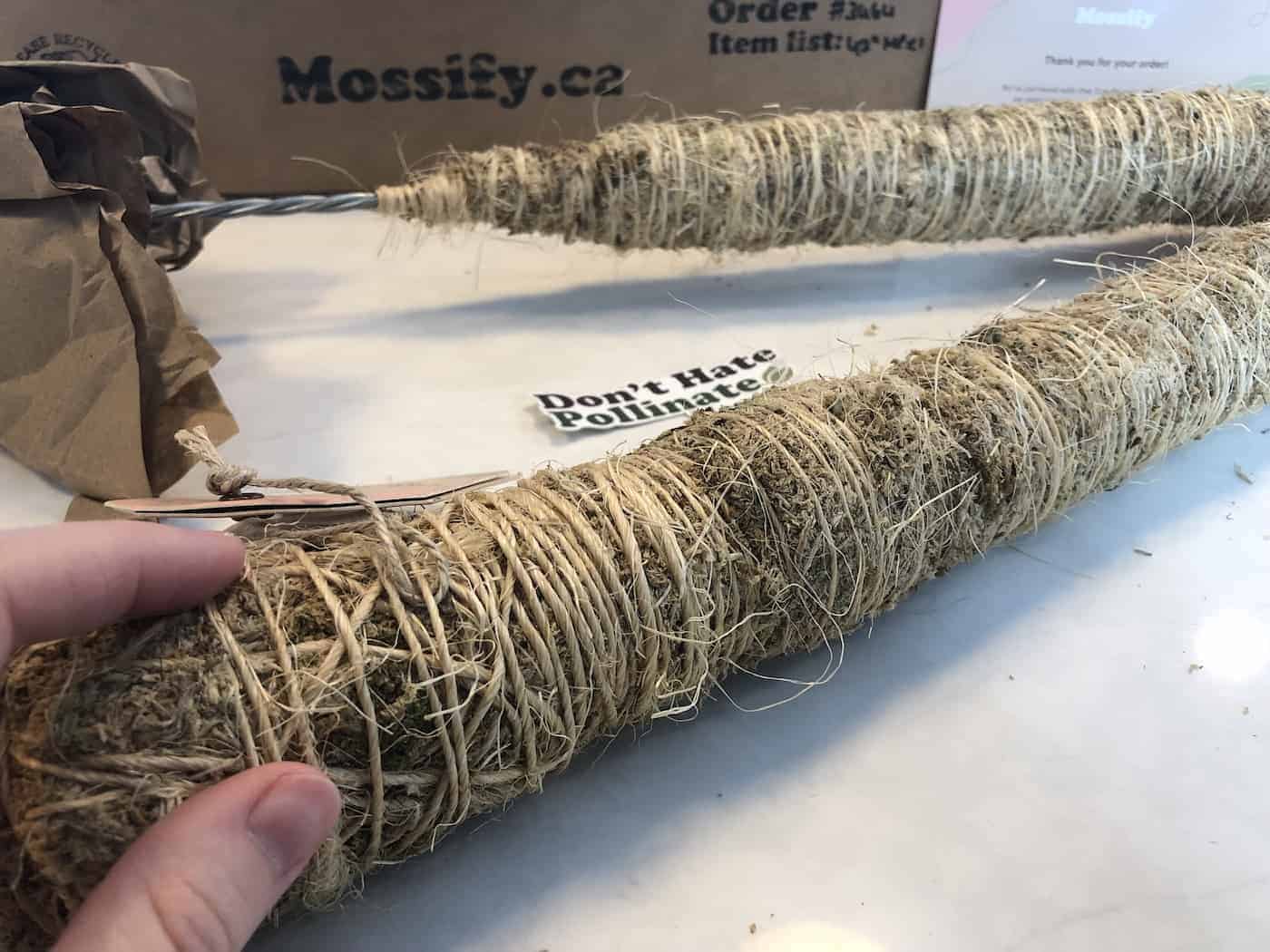
Different types of moss poles for plants
Most moss poles are made from a wooden plant stake wrapped in loose sphagnum moss or sheet moss. Most use a wooden dowel or traditional rectangular stake. Some types are stackable (often using a PVC pipe for a wooden dowel to slide into). The moss is generally held onto the pole with plastic or metal mesh or with natural jute twine.
There are also quite a few specialty types available. Some have hollow PVC pipe centers allowing for top-watering down through the moss pole. Others moss poles are empty mesh cylinder shapes that can be filled with live sphagnum moss. Some moss poles and plant totems are actually made with coco coir (coconut fiber) instead of true moss. There are even bendable moss poles!
Here are some examples of each type of moss pole:
Traditional wooden moss poles
- PlantHavn Stackable Sphagnum Moss Pole (16″-40″ tall, birch wood dowel, black or white outer mesh)
- Plants & Tina Mini Moss Pole (13″ tall, wooden stake, cotton thread)
- A Beautiful Moss Skinny Moss Pole (12″-48″ tall, bamboo stake, jute twine, clear thread)
Hollow PVC pipe moss poles
- SeeStars Self-Watering Moss Pole (12″-48″ tall, PVC pipe core, white or black outer mesh)
- Marisol Plant Goods Self-Watering Moss Pole (12″-48″ tall, PVC pipe core with wick, white outer mesh)
- Foraging Fosters Stackable Moss Pole (18″ increments, PVC pipe core, black outer mesh)
- Pretty Little Pothos Self-Watering Moss Pole (12″-48″ tall, PVC pipe with poly wick, black mesh)
Fillable mesh cylinder moss poles
- OrchidBox Self-Watering Honeycomb Stackable Plant Totem (9.3″ increments, black or white PLA plastic)
- Artsy Chinchilla 3D Printed Moss Poles (12″ plus 4″ increments, various colors)
- Hyyz Stackable Moss Pole Stick (2×14″ tall, white plastic)
Bendable/flexible moss poles
- Mossify Bendable Moss Pole™ (16″-42″ tall, galvanized steel core, natural jute twine)
- Mossify Bendable Coir Pole™ (16″-42″ tall, galvanized steel core, natural jute twine)
- Daphne’s Botanicals Bendy Moss Pole (24″-36″ tall, aluminum core, natural twine)
Coco coir moss poles
- The Sill’s Coco Coir Pole (11″ increments, wooden stake, natural jute twine)
- Growneer Coconut Coir Moss Pole (12″-48″ tall, wooden stake, natural jute twine)
- The Blooming Jungle Coco Coir Moss Poles (2×14″ tall, wooden stake, natural jute twine)
- Mossify Bendable Coir Pole™ (16″-42″ tall, galvanized steel core, natural jute twine)
See this blog post to learn all about the best moss poles available.
Making your own DIY moss poles
You can also make your own DIY moss pole for your indoor plants! Making different moss poles can lead to wonderful DIY projects and crafting sessions. Making your own moss poles allows you to create custom lengths and use the materials of your choice.
Start with a core of a wooden stake, bamboo stake, or PVC pipe. Wrap the outside with sphagnum moss, coco coir (coconut husk fiber), or sheet moss. Use natural jute twine, cotton thread, fishing line, or plastic mesh to hold the moss or coconut fibers onto the core.
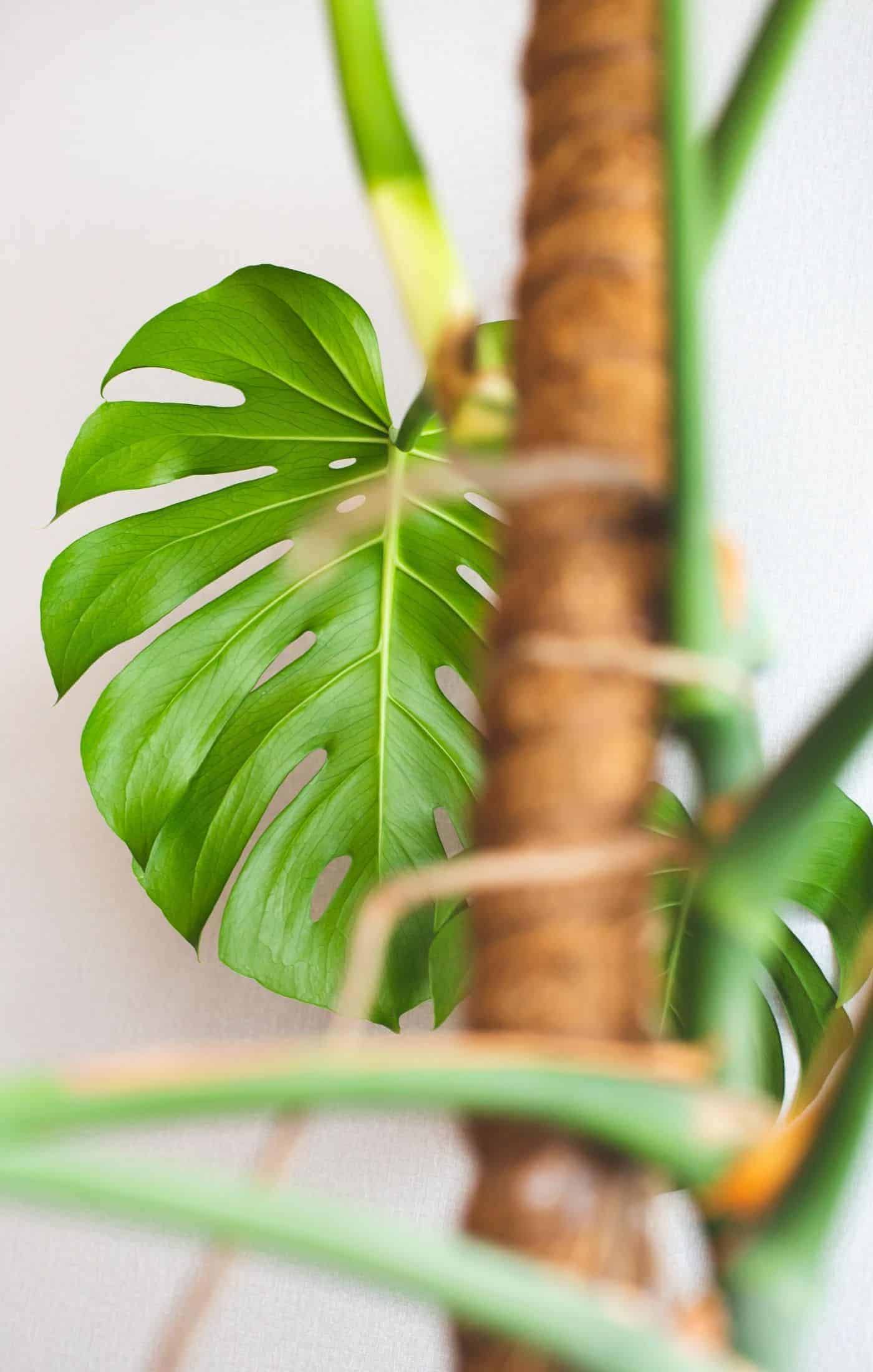
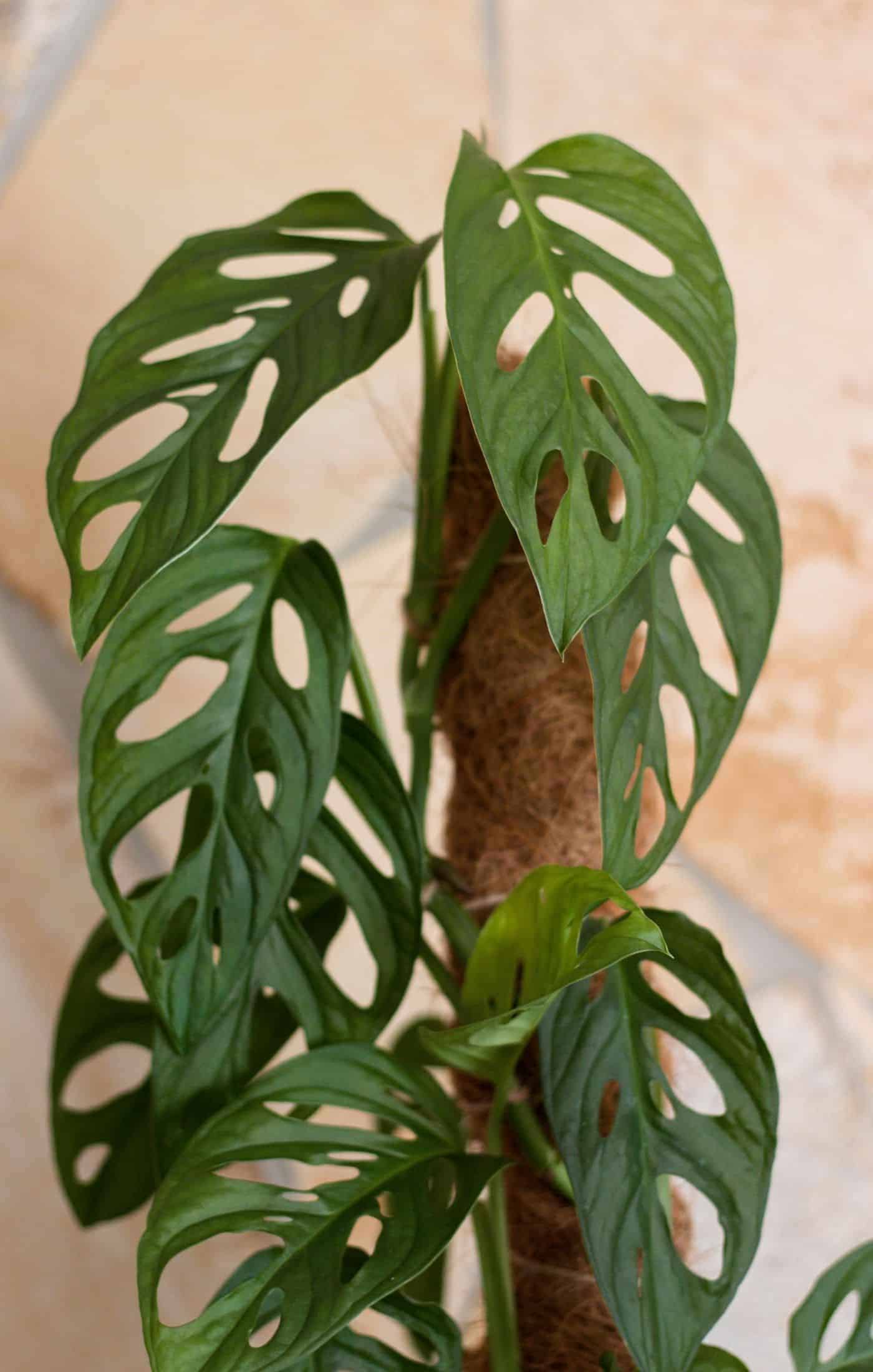
Climbing plants for moss poles
Climbing plants (especially epiphytes) are perfectly suited to moss poles. This includes tropical aroids and vining climbers that tend to develop aerial roots. Moss pole monstera plants are among the most popular choices, as are Pothos growing up moss poles.
Here are some of the best plants for growing on moss poles:
- Monstera deliciosa
- Monstera adansonii
- Rhaphidophora tetra
- Pothos ‘Marble Queen’
- Heart Leaf Philodendron
These vining tropical plants will climb right up a moist moss pole!
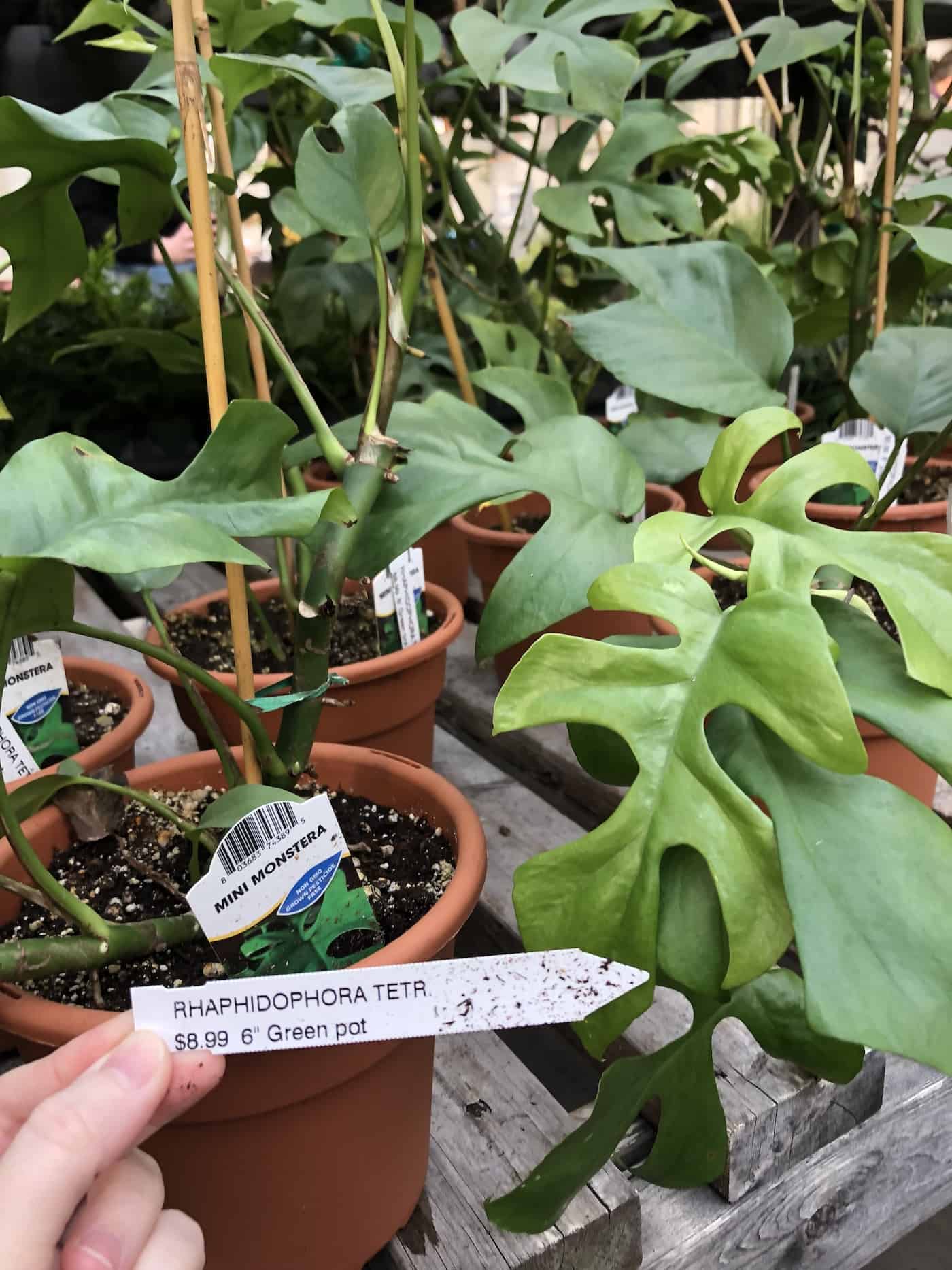
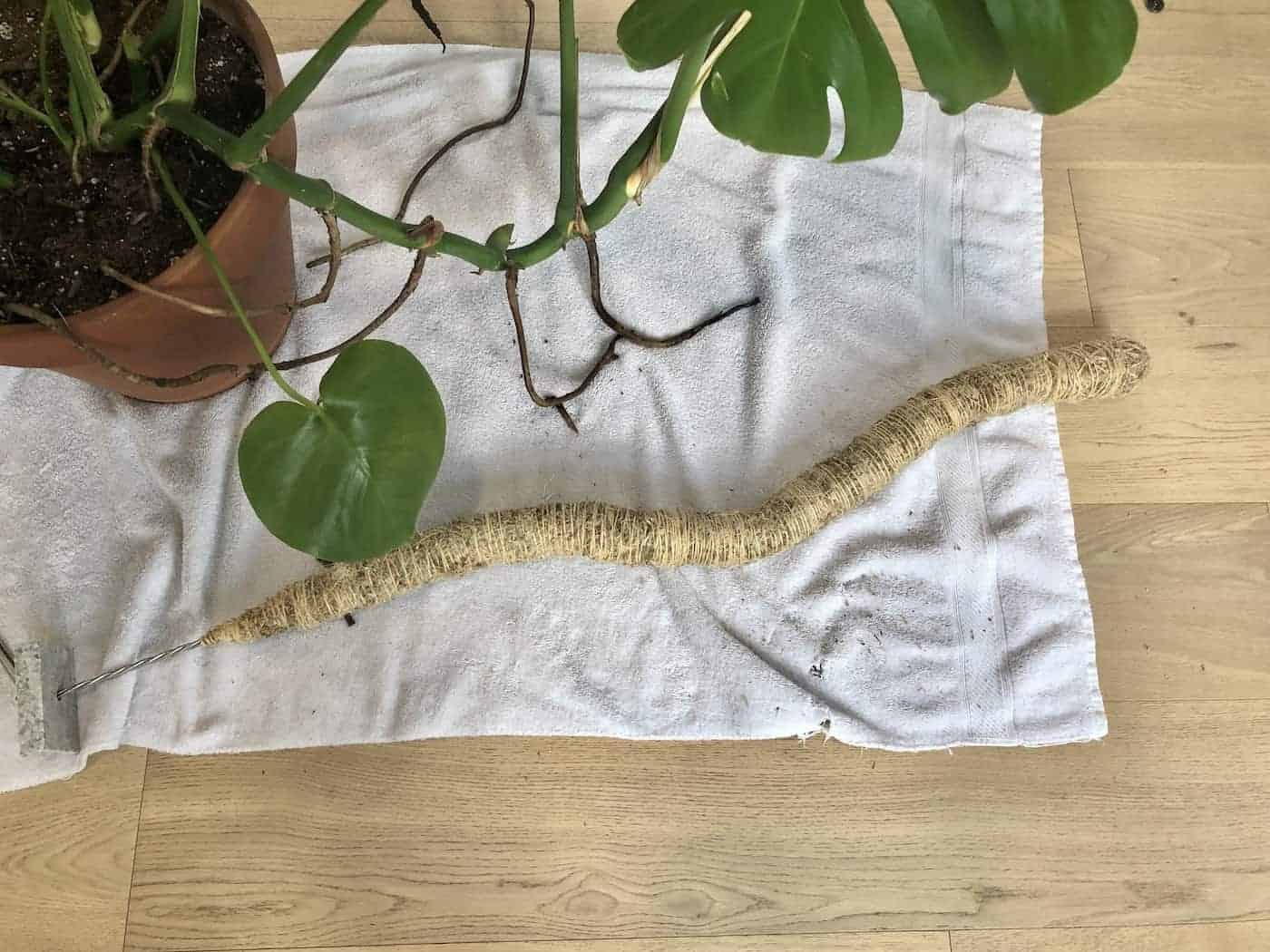
How to plant a houseplant with a moss pole
Moss poles can be added to the planter for any kind of climbing/vining plant. While some moss poles have a pointy base allowing for it to be poked down into the existing root ball, the best way to install them is usually during repotting. This allows for the moss pole to extend all the way to the bottom of the pot (making it less wobbly and able to support the weight of mature leaves).
Supplies for adding a moss pole to a plant
- Moss Pole
- Planter Pot
- Rocks
- Potting Mix (I like The Sill’s Organic Potting Mix)
- Sprout screen or coffee filter (optional)
- Twine, Plant Pins, Cotton Thread, Fishing Line, Twist Ties, or Plant Tape (softer materials are better)
- Scissors
During installation, a second pair of hands is also very helpful for larger plants like Monsteras.

Steps for installing the moss pole with the plant
Some moss poles come with their own installation instructions. If not, here are some basic steps for adding a moss pole to a plant:
- Remove the plant’s root ball from the existing planter pot. The plant can either be potted up into a larger planter or repotted into the existing planter (unless the plant has outgrown it). Make sure to use a pot with a drainage hole (or holes).
- If the pot has quite a large drainage hole, consider using a piece of landscape fabric or sprout screen to prevent rocks, soil, or roots from escaping out of the bottom of the pot.
- Place the moss pole into the empty planter so the base of the moss pole rests on the bottom of the pot.
- Fill the base of the pot with rocks to surround the bottom of the moss pole.
- Add some potting mix and compress gently around the base of the moss pole.
- Examine the root ball of the plant. Some houseplants tend to develop a sturdy root ball that may have to be broken up to fit around the base of the moss pole. Look around the stem base of the plant to find where the pole may fit best, and then pull apart the rootball in a vertical line to the bottom of the root ball.
- Wrap the split root ball base around the moss pole as it stands inside the pot. This is much easier with a second person to hold the moss pole in place during root ball placement.
- Backfill the planter with potting mix. Tuck any nearby aerial roots down into the soil. Be sure to leave a half inch to an inch of space at the top of the pot to facilitate watering the plant.
- Gently maneuver the plant’s vines around the moss pole. Do this slowly on plants with larger leaves to avoid them getting caught on each other and tearing. Attach each vine at several points using twine, thread, or plant tape.
- Soak the whole plant thoroughly (including the moss pole). Let the excess water drain before placing the planter pot onto its saucer.
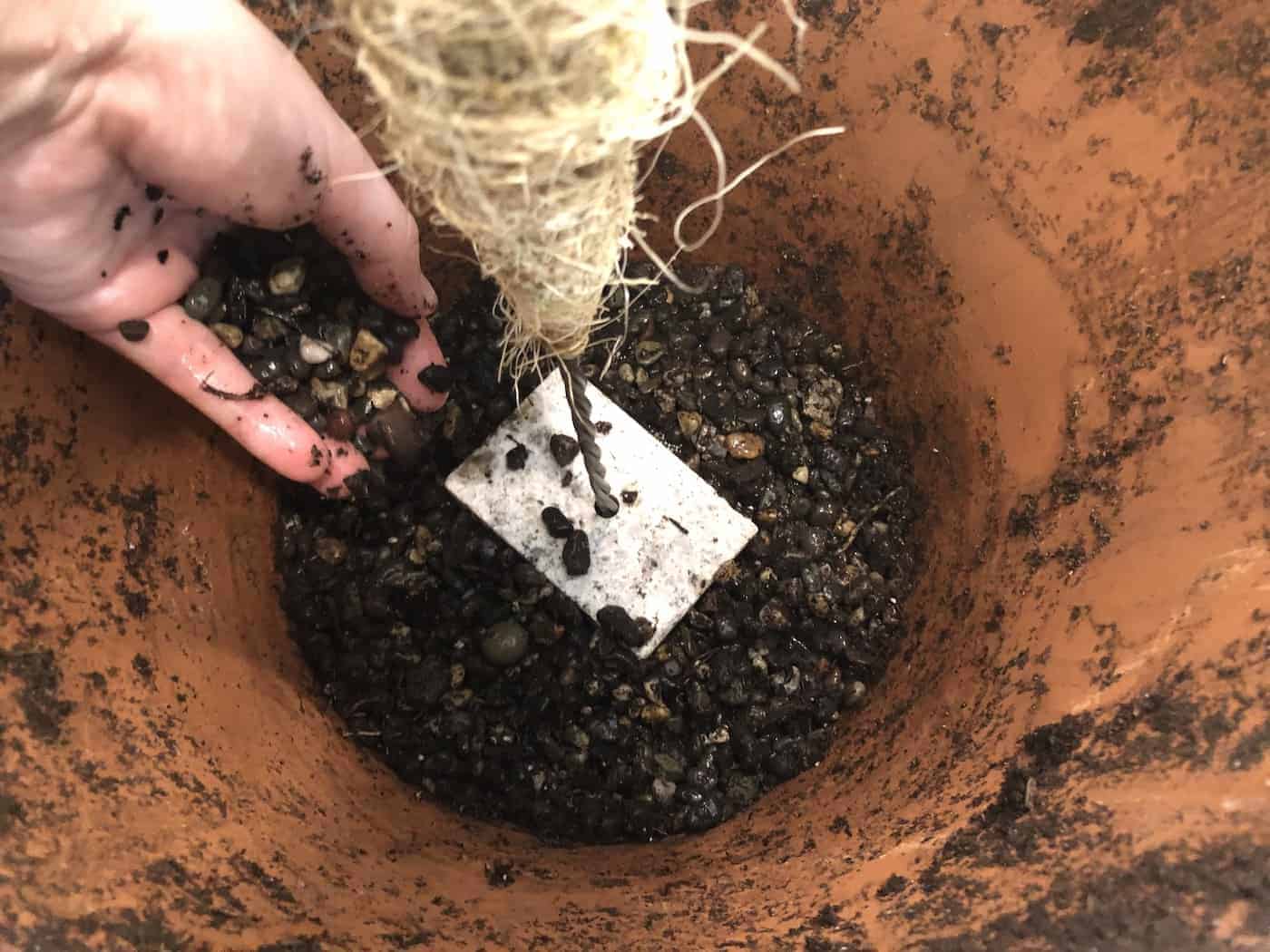
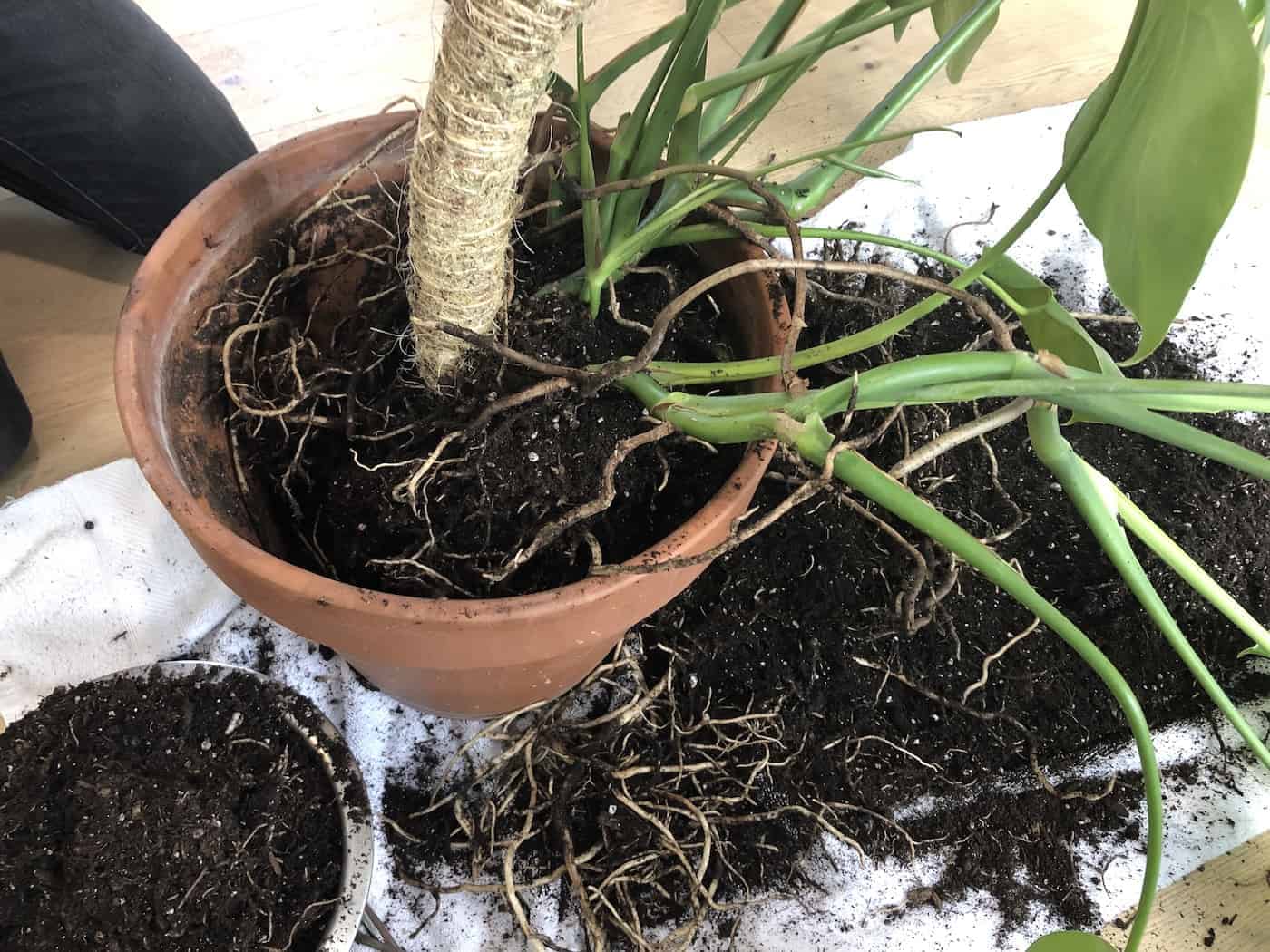
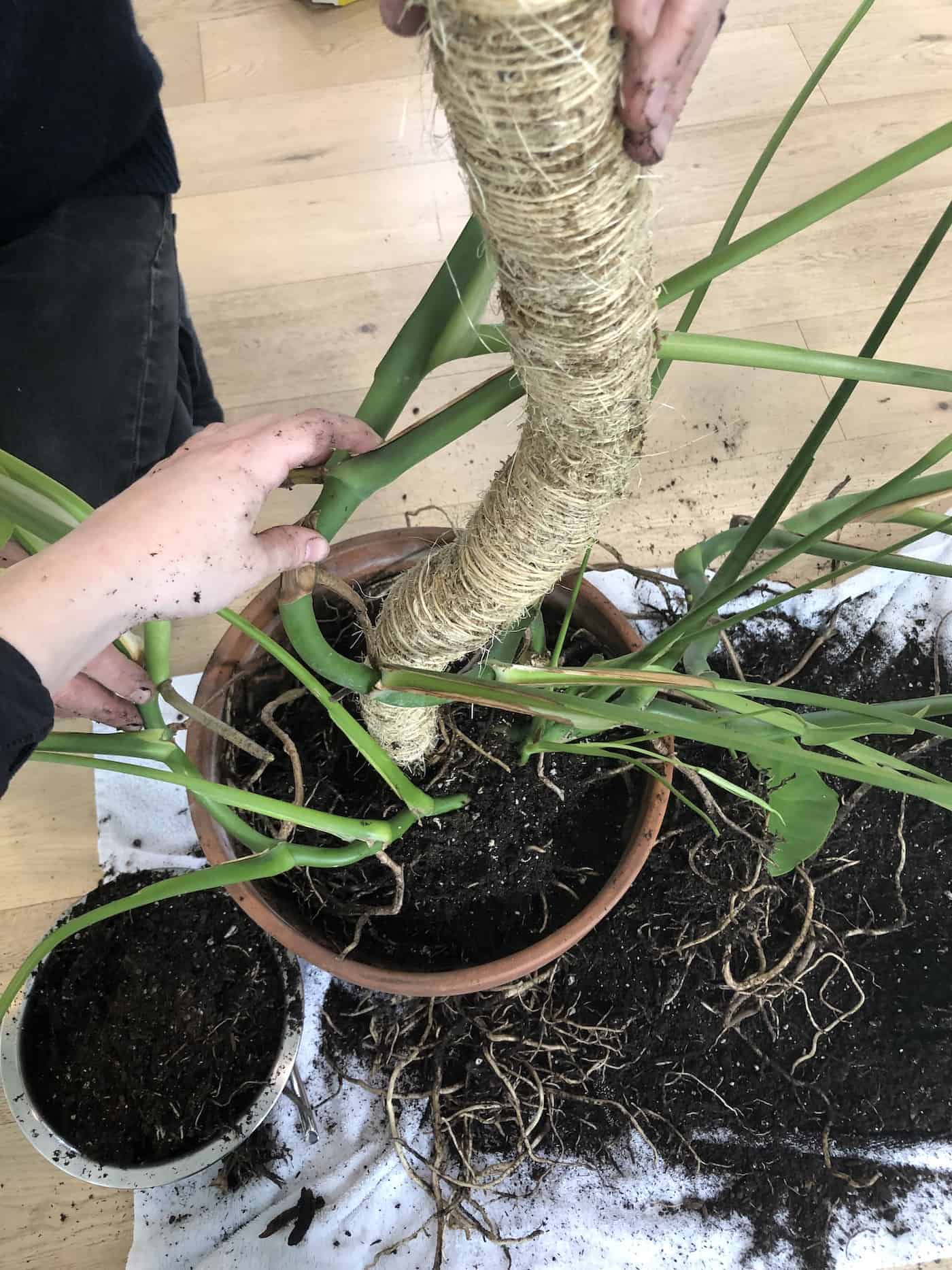
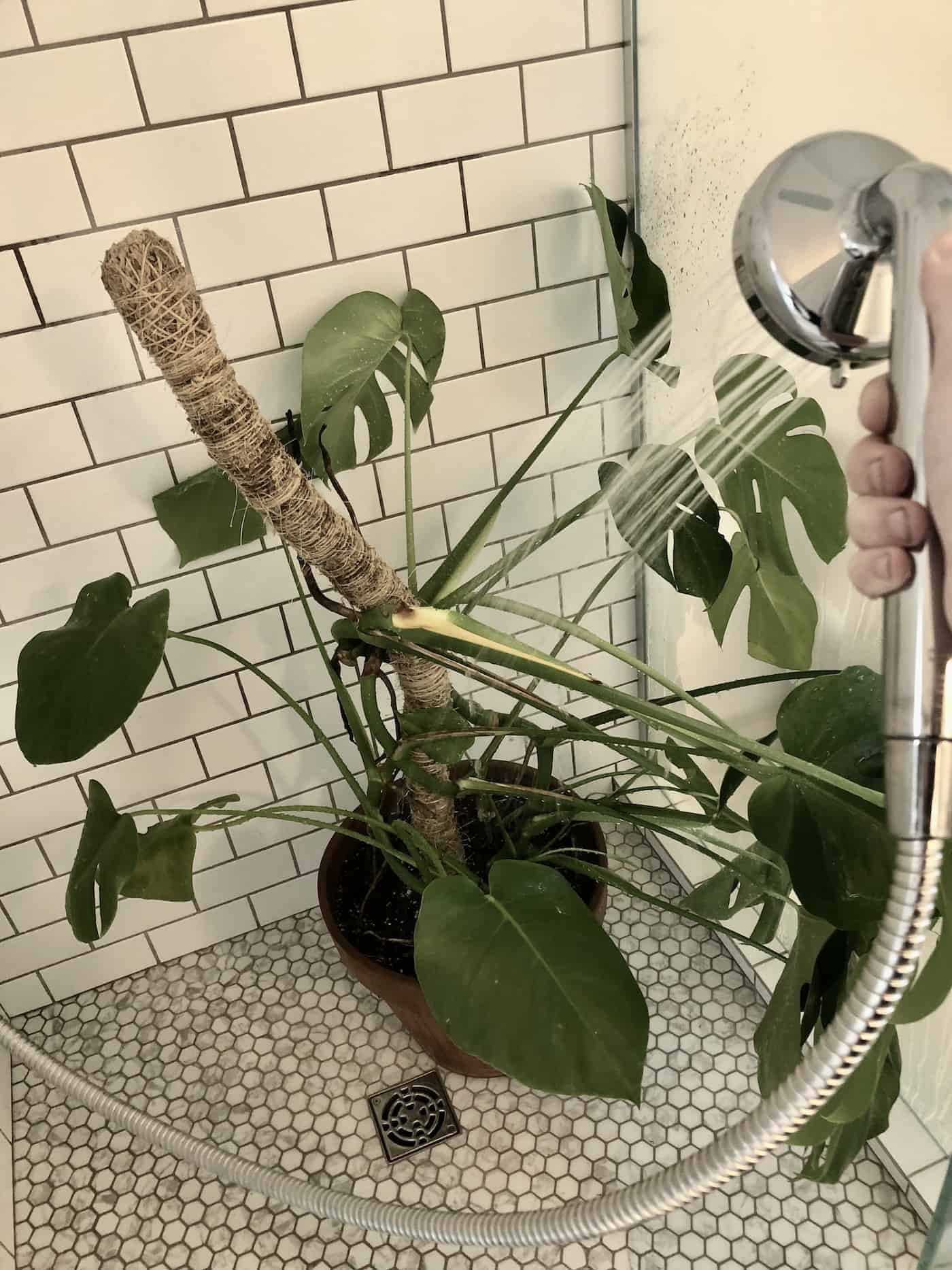
How to care for plants on moss poles
Moss poles for plants generally make the plants easier to care for than if the plant was just left to sprawl (especially for Monstera plants and other larger houseplants). That said, there is some upkeep in terms of attaching vines to the pole as well as keeping the pole moist. Let’s look at some basic care tips for moss poles.
As the plant grows, continue to secure plant vines to the moss pole so they can climb upwards. Use plant tape to attach the vines gently to the pole, without damaging the vines themselves. You can also attach aerial roots to encourage them to root into the pole.
Keep the moss totem pole moist to encourage aerial roots to root in. Keeping a moss pole moist is easiest with an automatic plant mister, but can also be done with a regular spray bottle or in the sink/shower with tap water. Misting also helps to increase air humidity in the short term.
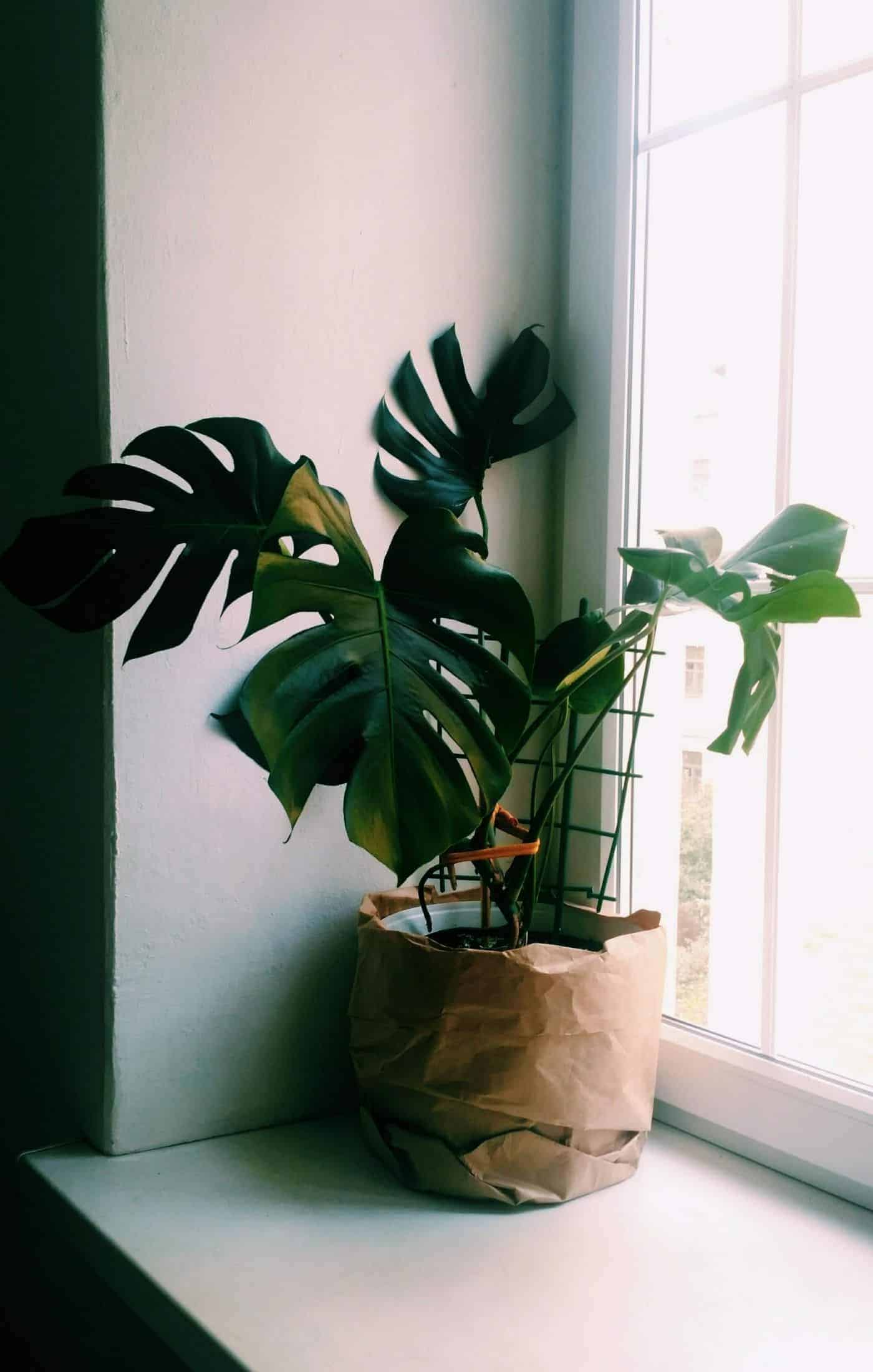
Moss pole alternatives
While the moss pole is the current plant support of choice for many houseplant growers, there are lots of other options and moss pole alternatives. Here are some other great plant supports and trellises for vining plants:
- Honeycomb Wooden Houseplant Trellis
- Copper Plant Stick Stem Supporter
- Leaf-Shaped Plastic Plant Trellises


